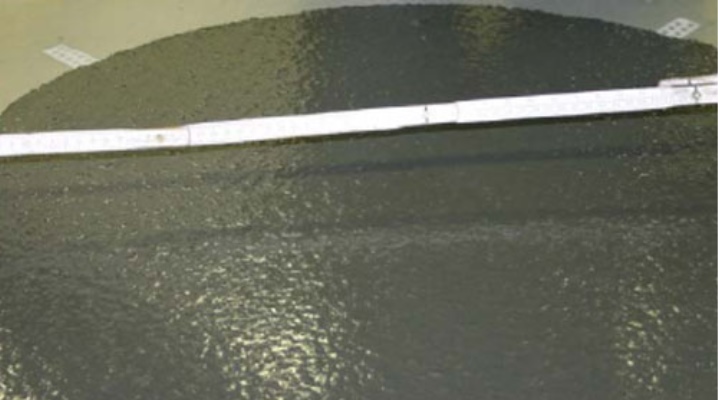Self-compacting concrete

Self-compacting concrete - concrete that has the ability to fill a form even in densely reinforced structures due to compaction under the influence of its own weight.
Features and Benefits
The mortar for self-compacting concrete has the property of great workability (up to 70 cm), characterized by a relatively small ratio of water and cement (0.38 ... 0.4). The material is quite strong (about 100 MPa). The risk of corrosion is minimized due to the good density of the material. Polymer polycarboxylate is the main part in the composition and works as follows. It is absorbed by the surface of the cement grains, a negative charge is transferred. For this reason, the grains repel each other, thus forcing the solution and mineral elements to move. The plasticizing effect can be enhanced by intermittent stirring.
The advantages of this type of concrete are low noise level, reduced construction time, the possibility of long-term transportation of the mixture, high-quality surfaces of products, there is no need to use a vibration compactor. In this regard, electricity costs have been reduced, and due to the absence of noise, it became possible to locate reinforced concrete factories in cities.

A bit of history
In the late 60s - early 70s, high-strength concretes began to be used, which were improved with additives-super-plasticizers. For example, in 1970 they were used to build oil platforms in the North Sea. The use of concrete with superplasticizers has demonstrated its advantages, but disadvantages have also been identified when working with it. If the pipeline through which the mixture is supplied is longer than 200 meters, then mixture stratification and heterogeneity appear in the final product.
Also, with the addition of most superplasticizers at high dosages, it is possible to slow down the setting of the mixture. And when transported in 60-90 minutes, the effect of the additive decreases, which means that mobility decreases. From all of the above, it becomes clear that the time to complete the work increases, the strength and quality of the surface of the product becomes worse.
To eliminate the shortcomings, theoretical studies and practical developments were applied:
- addition of micro- and ultrafine aggregate to increase strength, protect against corrosion and cracks in the material.
- use of multifraction filler to obtain high strength.
- the newest types of chemical modifiers have been created to regulate properties.
In 1986, after summarizing the accumulated experience, Professor Okamura called his development "self-compacting concrete".
In 1996, the RILEM group was formed, consisting of experts from a dozen countries, to create operating instructions due to their high efficiency.
In 1998, the first international conference was held to study its characteristics with the assistance of 150 scientists and engineers from different countries.
In 2004, the 205-DSC committee was created, headed by Professor Schutter, to create the classification of species necessary to establish the purpose and scope. During the functioning of this committee, 25 laboratories from different countries were used.













The comment was sent successfully.